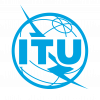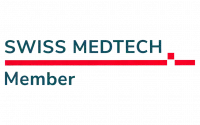BLOG
Telecom26 blog
Shanghai named as the smartest city, followed by Seoul, Barcelona, Beijing and NYC. The role of Telecom26 and IoT in enabling smart cities

The IoT Agenda website defines a smart city as one that uses “ICT to increase operational efficiency, share information with the public and improve both the quality of government services and citizen welfare”.
The author says that “emerging trends such as automation, machine learning and the IoT are driving smart city adoption” and “any area of city management can be incorporated into a smart city initiative”.
At the start of the year Juniper Research has Shanghai as the world’s number one smart city for 2022 in its latest research, Smart Cities: Key Technologies, Environmental Impact & Market Forecasts 2022-2026.
According to Juniper, the top 5 smart cities are:
- Shanghai
- Seoul
- Barcelona
- Beijing
- New York
According to the news release about the report: “The ranking of 50 world cities is based on an evaluation of many different aspects of smart cities, covering transportation and infrastructure, energy and lighting, city management and technology, and urban connectivity”.
Urban connectivity, of course, covers fibre, cellular, wireless and IoT.
“Many cities have deployed technology and data to help local authorities reduce environmental impact and energy usage,” remarked research co-author Mike Bainbridge. “The top cities in our recent ranking are finding innovative ways to leverage that technology to deliver observable benefits for their citizens as well.”
Smart City Initiatives and IoT
Smart City World is packed full of interesting IoT initiatives from around the world.
This story caught our eye last year Can smart lampposts help stop the spread of Covid-19?
No longer is a street light just for showing us the way…“The latest generation lamp columns go beyond street lighting by incorporating sensors that can receive and transmit information about crowd density, and even the body temperature of individuals. They can also incorporate CCTV, air quality sensors, flooding monitors, digital signage, and 5G wifi hotspots”.
In fact, the city of Barcelona has developed a camera-based solution attached to lampposts so that it can monitor how busy its lovely beaches are - and implement crowd control measures to enable social distancing. To complement this, temperature sensors can also be mounted on a lamppost
Whilst in “Los Angeles, which already has 400 smart street lights, equipped with electronic vehicle chargers, the city is looking to pilot air quality sensors, fire spotters, gunshot locators and earthquake sensors”.
Of course, wherever a sensor is attached to a device then connectivity is needed so that the information gathered can be transmitted back for analysis and action. And, in the case of smart traffic lights, two-way connectivity is required so they can be controlled remotely.
And it’s not just cities that are actively deploying and embracing IoT. In this earlier blog The rollout of enterprise IoT networks - lots of optimism from analysts we looked at two analyst reports which are upbeat: “The overall feeling about the future of IoT is optimistic as the technology matures and more projects are deployed within enterprises”.
IoT, Sensors, Mass Market - and the need for ready-to-go connectivity
One issue that will need addressing as Smart City technologies are adopted is the need to standardise components. To take Barcelona’s smart lamp posts as an example. The CTO for the city will chose their preferred local operator to provide connectivity to the lamp post for the one SIM in each sensor. However, when the technology is commoditised and manufactures or suppliers or integrators want to ship turnkey solutions to cities around the world, the SIMs will need to be integrated into the sensor.
Enter Telecom26’s Global SIM cards which can connect to 1100+ cellular networks belonging to more than 620 mobile operators in 220 countries. Problem solved.
Telecom26 and IoT Connectivity
As a global mobile connectivity provider, Telecom26 can help with the rollout of IoT networks across a range of vertical markets. You can read more in these previous blogs:
IoT SIM Card - One SIM, One Supplier, Multiple Networks For IoT devices
At the heart of Telecom26’s IoT service are our global eSIMs and physical SIM cards. One of our SIMs in an IoT device provides access to all of the networks covered by our global roaming service.
Our global SIMs remove the need to worry about the coverage of a single MNO, or the existence of roaming alliances. They automatically select the best performing network in the area, cross-border, while providing enterprises with the freedom to change SIM profiles and services with ease.
We can also customise our offering, and build routing profiles for each IoT device according to a customer’s needs and budget. For example, for organisations that are more price sensitive we can ensure that our Global SIM cards automatically connect to the cheapest service in the area, rarely access expensive satellite links - and make the most of wifi for data-heavy up and downloads.
In a nutshell, Telecom26 enables data connectivity, anywhere - so that your IoT device can connect to the best available network, regardless of location.
We offer a full range of connectivity options including 5G, LTE, WiFi, private networks, 2G, 3G and 4G, as well as offshore connectivity capabilities.
So if you’d like to find out more about our IoT SIM cards and how Telecom26 can help improve IoT connectivity and the global connectivity service used by your device, then please contact us.
Telecom26 is a full operator member of the GSMA and the ITU.



